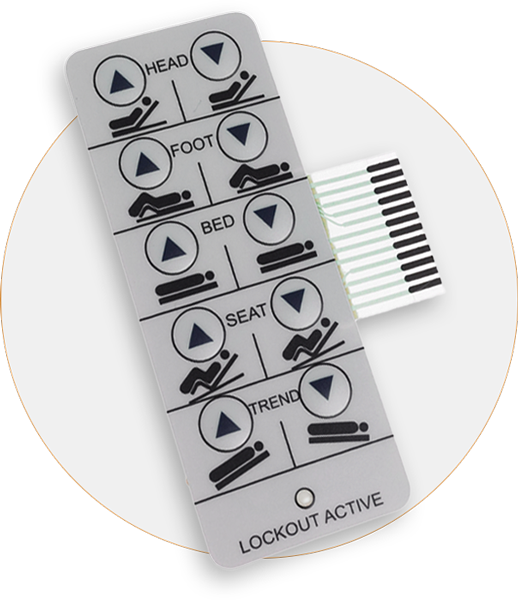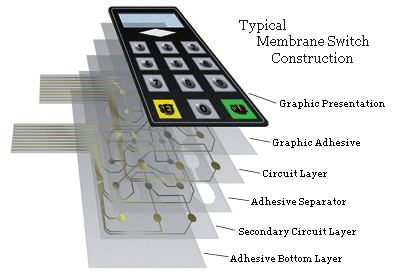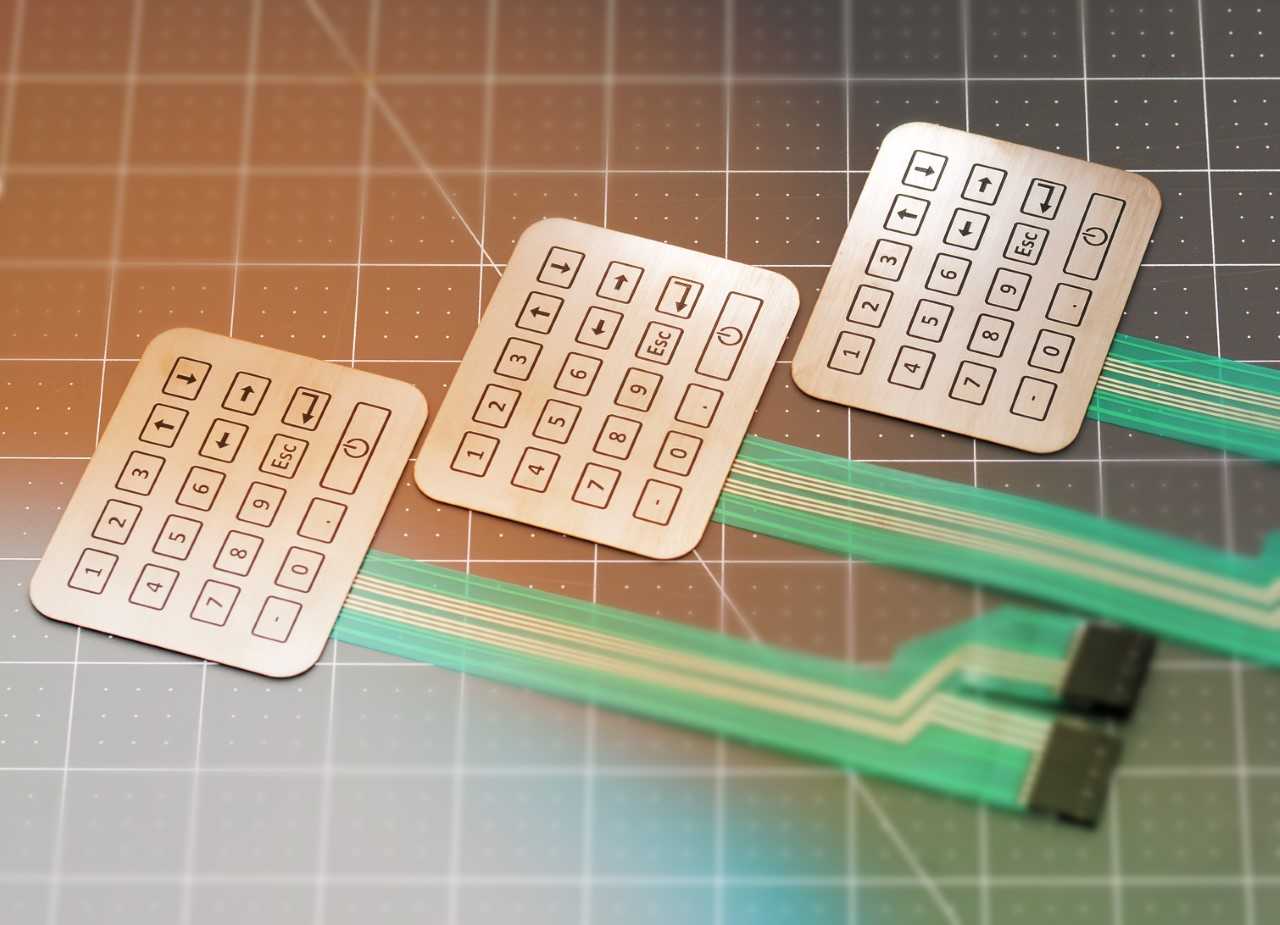Choosing the right membrane switch manufacturer can significantly impact your product's performance.
Choosing the right membrane switch manufacturer can significantly impact your product's performance.
Blog Article
All Concerning Membrane Switch: Recognizing Its Style and Functionality
When you assume concerning the control interfaces in modern-day gadgets, membrane switches usually enter your mind. These components are extra than just buttons; they mix design and capability perfectly. Understanding just how they work and what makes them reliable can alter your perspective on day-to-day electronics. There are subtleties to their design and performance that you might not be conscious of. Allow's explore what sets membrane layer changes apart from various other control systems.
What Are Membrane Buttons?

Their smooth nature makes them very easy to clean and resistant to dust and moisture, an essential attribute in several atmospheres. Membrane buttons can additionally be personalized relating to form, dimension, and graphics, allowing makers to create distinct interfaces customized to specific products. And also, they're light-weight and thin, which helps in decreasing the general bulk of devices. Overall, membrane layer switches play a considerable duty in improving user experience throughout a large range of applications.
Exactly How Membrane Layer Changes Work
When you push a secret on a membrane layer button, it triggers a straightforward yet reliable system. The leading layer, usually made of adaptable product, lowers onto a conductive layer under it. This action bridges the gap in between conductive traces, completing an electrical circuit. As quickly as the circuit closes, it sends out a signal to the device's controller, which analyzes your input.
You'll notice that the tactile responses varies based upon the switch style, offering either a soft click or a much more obvious response. As soon as you launch the trick, the membrane go back to its original placement, reopening the circuit and stopping the signal. This procedure takes place nearly instantaneously, making sure a responsive customer experience.
Membrane layer buttons are prominent as a result of their toughness and resistance to dust and moisture, making them suitable for various applications, from family devices to clinical tools. Understanding this procedure aids you appreciate their widespread use.
Key Parts of Membrane Layer Switches
Understanding the essential components of membrane layer buttons is basic for realizing their capability and design. The safety layer guards versus environmental factors and put on, prolonging the switch's life-span. By recognizing these elements, you'll gain understanding into just how membrane layer changes run and their value in various applications.
Products Utilized in Membrane Layer Change Design
The performance and resilience of membrane switches over heavily depend upon the materials made use of in their layout. You commonly experience polyester and polycarbonate as key substrates because of their outstanding stamina and flexibility. These materials withstand scrapes and chemicals, making them ideal for requiring settings.
The conductive layers typically use silver or carbon, picked for their reliability and conductivity. membrane switch manufacturer. Silver offers premium efficiency, while carbon is a cost-efficient alternative. For the overlay, you may take into consideration a matte or glossy coating, depending on your visual demands and customer experience
Make certain to select adhesives that hold up against environmental factors like temperature and humidity. Picking the right products will guarantee your membrane layer button stands the test of time.
Layout Factors To Consider for Membrane Layer Switches
While making membrane layer buttons, it's essential to take into consideration numerous aspects that influence their capability and user experience. Beginning by concentrating on the layout and button dimension; make sure they're instinctive and very easy to browse. Think about the tactile responses you want to offer-- will users require an obvious click or a softer touch? In addition, believe about the products you'll utilize, as they'll impact resilience and appearances.
Do not neglect the visuals style; clear labeling and color contrast are substantial for visibility. Verify your layout fits ecological factors, like wetness or temperature level variations, which can affect performance. Bear in mind the look at this web-site significance of testing prototypes with genuine customers to collect responses and make required modifications. This iterative procedure helps you fine-tune the style, verifying it meets both practical and visual needs efficiently. By carefully thinking about these elements, you'll produce a membrane layer switch that improves use and satisfaction.
Applications of Membrane Layer Buttons
Membrane buttons are functional parts located in numerous applications, from commercial tools to consumer electronic devices. You'll see their effect in makers that need durable interfaces and in tools that take advantage of sleek designs. Understanding these applications assists you value the capability and functionality of membrane layer switches in everyday technology.
Industrial Tools Usage
When you're seeking to boost the capability of commercial equipment, membrane layer buttons offer a trustworthy option that integrates resilience with user-friendly design. These switches are excellent for extreme atmospheres, giving resistance to dust, moisture, and chemicals. You'll find them in control panels for making makers, heating and cooling systems, and medical devices, where accuracy and responsiveness are important. Their low account implies they fit flawlessly right into various tools, conserving valuable room while preserving convenience of usage. With personalized graphics and backlighting alternatives, you can create an read this article intuitive user interface for drivers, enhancing effectiveness and safety. And also, their long lifespan minimizes upkeep prices, making them a wise investment for your industrial applications. Welcome membrane switches to streamline your procedures and enhance total performance.
Consumer Electronics Combination
In the domain of consumer electronics, membrane layer switches play an essential function in boosting user communication and tool capability. Membrane buttons additionally ensure toughness and resistance to dust and dampness, expanding the life expectancy of your electronic devices. By selecting membrane layer buttons, you boost not just the capability however also the design of your tools, making daily communications smooth and enjoyable.
Advantages and Disadvantages of Membrane Layer Switches
While membrane layer switches provide a range of advantages, they likewise come with some drawbacks that you must think about. One substantial benefit is their compact layout, making them ideal for space-constrained applications.

Nonetheless, there are disadvantages. Membrane layer buttons can have a much shorter life expectancy compared to mechanical buttons, particularly under heavy usage. They can additionally be much less responsive, which could influence individual comments during procedure. If harmed, fixing them can be difficult and commonly needs complete substitute. Inevitably, their sensitivity to extreme temperature levels and environmental conditions might restrict their efficiency in particular settings. Stabilizing these advantages and disadvantages will aid you figure out if membrane layer switches are the appropriate fit for your task.
Frequently Asked Questions
How Much Time Do Membrane Layer Switches Over Generally Last?
Membrane layer switches over Full Report generally last in between 5 to ten years, depending on usage and ecological conditions. You'll desire to examine factors like wear, exposure to wetness, and temperature level variations to determine their long life efficiently.
Can Membrane Layer Changes Be Custom-made for Details Layouts?
Yes, you can customize membrane layer switches to fit particular styles (membrane switch manufacturer). You'll have the flexibility to choose shades, forms, and designs that match your job's demands, guaranteeing they blend flawlessly with your general aesthetic
What Is the Cost Range for Membrane Layer Switch Over Manufacturing?
The price range for membrane layer switch production commonly falls in between $1 and $10 each, relying on variables like layout complexity, amount, and products. You can obtain quotes from producers to find the most effective option.

Are Membrane Switches Over Water-proof or Resistant?
Membrane switches can be made to be waterproof or resistant, depending upon materials used and building and construction techniques. If you need them for wet atmospheres, assure you define those requirements throughout the layout process.
Exactly How Do Membrane Changes Contrast to Conventional Buttons?
Membrane buttons are generally thinner and a lot more adaptable than traditional switches, offering a smooth layout. They're often much easier to clean up and incorporate, however might not provide the responsive feedback you're utilized to with mechanical alternatives.
Verdict

Report this page